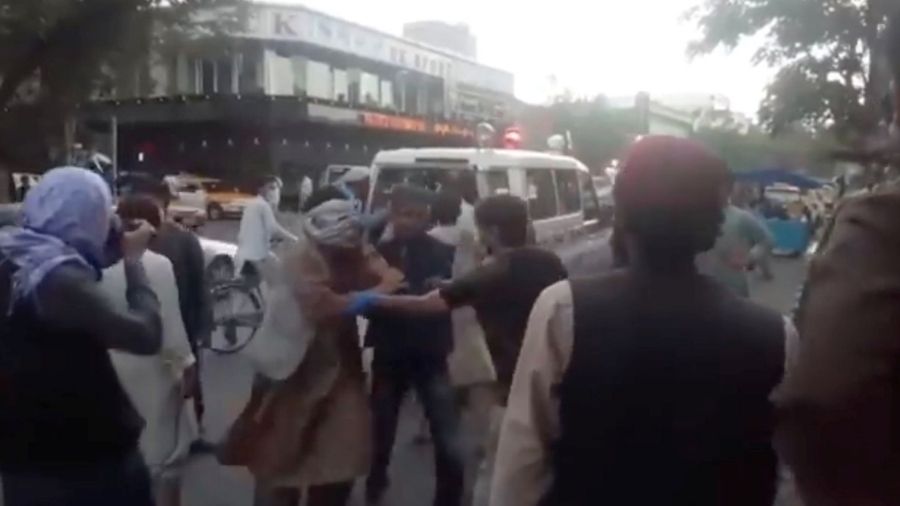Four months after an Islamic State suicide bomber killed scores of people, including 13 American service members, outside the airport in Kabul, Afghanistan, US and foreign intelligence officials have pieced together a profile of the assailant.
Military commanders say they are using that information to focus on an Islamic State cell that they believe was involved in the attack, including its leadership and foot soldiers.
The cell members could be among the first insurgents struck by armed MQ-9 Reaper drones flying missions over Afghanistan from a base in the Persian Gulf. The US has not carried out any airstrikes in the country since the last American troops left on August 30.
The attack at the airport’s Abbey Gate unfolded four days earlier, during the frenzied final days of the largest non-combatant evacuation ever conducted by the US military.
It was one of the deadliest attacks of the 20-year war in Afghanistan.
The Islamic State identified the suicide bomber as Abdul Rahman Al-Logari. American officials say he was a former engineering student who was one of several thousand militants freed from at least two high-security prisons after the Taliban seized control of Kabul on August 15.
The Taliban emptied the facilities indiscriminately, releasing not only their own imprisoned members but also fighters from Islamic State Khorasan, or ISIS-K, the group’s branch in Afghanistan and the Taliban’s nemesis.
“It’s hard to explain what the thinking was in letting out people who were a threat to the Taliban,” Edmund Fitton-Brown, a senior UN counterterrorism official, said at a recent security conference in Doha, Qatar.
Logari was not unknown to the Americans. In 2017, the CIA tipped off Indian intelligence agents that he was plotting a suicide bombing in New Delhi, US officials said. Indian authorities foiled the attack and turned Logari over to the CIA, which sent him to Afghanistan to serve time at the Parwan prison at Bagram Air Base. He remained there until he was freed amid the chaos after Kabul fell.
Eleven days later, on August 26 at 5.48pm, the bomber, wearing a 25-pound explosive vest under his clothing, walked up to a group of American troops who were frisking those hoping to enter Hamid Karzai International Airport. He waited, military officials said, until just before he was about to be searched before detonating the bomb, which was unusually large for a suicide vest, killing himself and nearly 200 others.
The attack raised ISIS-K’s international profile, and positioned it both as a major threat to the Taliban’s ability to govern the country and, according to American officials, as the most imminent terrorist risk to the US coming out of Afghanistan.
“The group has gained some notoriety in a way that could be quite compelling for them on the transnational stage,” Christine Abizaid, the director of the National Counterterrorism Center, said in October at a national security conference in Sea Island, Ga.
“At the same time, they’re fighting the Taliban. How that force-on-force engagement in Afghanistan will go will have some defining characteristics about what the transnational threat looks like.”
In October, Colin H. Kahl, the under secretary of defense for policy, told the Senate Armed Services Committee that ISIS-K could be able to attack the US sometime in 2022.
“We could see ISIS-K generate that capability in somewhere between six and twelve months,” he said.
The Parwan prison at Bagram and the Pul-e-Charkhi prison near Kabul were the Afghan government’s two main high-security prisons. The US built Parwan in 2009 and transferred it to Afghan government control three years later.
On July 1, with little warning and no public ceremony, US forces abandoned Bagram Air Base, the main hub for American military operations. Six weeks later, on August 15, Taliban fighters swept into the base and threw open the prison gates.
New York Times News Service










